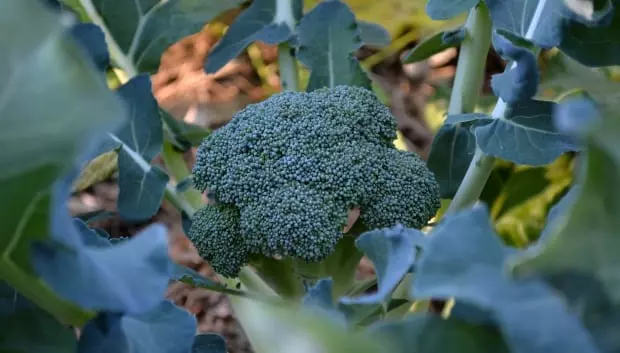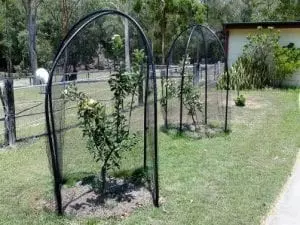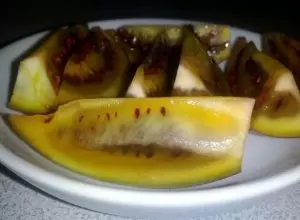Ever wondered if all fertilisers are the same? Or, if one fertiliser was better than others? How about using no fertiliser at all and just the soil – would it make a difference or are we being sold unnecessary products?
Plant fertiliser isn't cheap. We're told by sales staff and manufactures that certain products are the best and we're given anecdotal information from all sorts of information resources about what they recommend to use as fertilisers.
I've often wondered myself, what types of fertiliser is best for my plants. Is granular slow release better than blood and bone or is organic fertiliser made purely from natural ingredients and manures better? Unfortunately, I have never really had the time or patience to conduct a controlled experiment or trial to prove any theories.

Broccoli is a hungry plant and needs a good fertiliser to grow well (image above)
Well, I'm pleased to say we have managed to acquire this, exclusive to SSM, report showing the results of a five week trial comparing three top brand commercial fertilisers: granular, blood and bone, and organic pellet.
Trial background
This 5 week fertiliser trial was conducted by my brother in-law (Werner) during his training as a horticulturist. Yes, so you can see how this exclusive information was procured… it was an inside job. Once Werner told me about his fertiliser trial, I knew the results would be of interest to the readers of SSM. Luckily for us, Werner was happy to share the results of his trial here for everyone to see.
Personally, I found his simple trial fascinating because it confirmed and surprised me. Some of Werner’s fertiliser trial results confirmed things which I had always suspected about using commercial fertilisers and other findings completely surprised me.
Trial set-up and environment
The preceeding images and accompanying text pretty well describes the fertiliser trial perfectly.
All the plants were watered exactly the same, the same plant species was used for all pots, and the same potting medium was also used. The plants stayed in position and were kept outside.
Purpose
The purpose of the trial was to compare the performance of 3 commercially available fertilisers over a 5 week period.
Method
20 petunia seedlings were potted up in 140mm pots using the exact same potting mix.
The pots were separated into 4 groups of 5. Group 1 to 3 were each fertilised with a different product and group 4 was the control i.e no fertiliser.
The exact same potting technique was used for all 20 pots. After potting, the seedlings were watered in and fertilised as per manufacturers recommendations.
At the end of the 5 week trial, the plants were evaluated by qualitative and quantitative methods.
Fertiliser Trial Start

Week 1

Week 2

Week 3

Week 4

Fertiliser Trial End – Week 5

Conclusions
The first and probably most important conclusion made is the superior performance of all three fertilised groups compared to the control. The case to fertilise could not be stronger.
Scorched leaf – The poor performance, including the scorched leaf margins in the early stages of the trial, in group 1, is perhaps the most interesting aspect of the trial. In theory, the fertiliser in group 1 should have performed the best, as the N-P-K ratio of 5-5.8-4.5 fit the best for flowering plants. The scorched leaf margins can not be contributed to a Potassium (K) deficiency for the following reasons:
- None of the other symptoms such as yellowing and/or cupped leaves were observed.
- The symptoms were observed in both old and new growth.
- Most importantly, the fertiliser used in group 1 had 4.5% Potassium (K), group 2 had 1% K and group 2 had 1.5% K.
- No scorching on leaf margins were observed in group 2 or 3.
Perhaps a Magnesium (Mg) deficiency is to blame, but again the symptoms were observed in old and new leaves. None of the other symptoms were observed, such as patchy yellowing with triangle of green at base of leaves and red or orange patterns. There is only a Mg analysis available for the fertiliser in group 3, so it is not possible to exclude a Mg deficiency by direct comparison.
The symptoms can not be explained by a possible toxicity problem because the symptoms started to clear up after the follow up fertilise in week 2. This does, however, give weight to the Mg deficiency argument. I will leave it at that: A possible Mg deficiency in group 1 during early stages of trial.
Best performing fertiliser? As for drawing a conclusion as to the most successful fertiliser in the trial, one would have to say group 3 (Organic pellet fertiliser) was the best performer. Both in qualitative and quantitative assessments. What is also interesting, is the more uniform performance of group 3 compared to group 2. This indicates the possibility that the available nutrients is more evenly distributed in the product used in group 3.
The cost involved with this product is also favourable compared to other fertiliser products.

Trial caveats/disclaimer
As good as this trial was we need to concede there are obvious limitations to this trial and the testing conditions.
For a start, this trial was very specific only 3 types of fertiliser, one growing medium, and one type of plant. Meaning, there are thousands of different fertilisers on the market each with their own properties, plant species target, and quality rating. It's a little simplistic to group all granular fertilisers and pitch them against all pellet organic chicken manure based fertilisers, for instance.
Also, to be fair to the commercial manufacturers we did not show any brand names for comparison. This is because it would be inappropriate to portray one commercial brand of fertiliser is better than another for this size of trial.
Nevertheless, I don't want to for a second play-down what was an excellent and interesting study done by Werner. For us “backyard gardeners” a trial like this one has been controlled well enough to be better than just a "hunch" and that's why it's interesting – the results speak for themselves and they mean a lot.
Like I wrote earlier, for me, this trial has confirmed some things about fertilisers, which I had known for years through my own experience and it also gave me some surprises. There is no doubt this trial has persuaded me to perhaps revisit my own fertilising techniques and I'm not ashamed to say it…
Thanks Werner
Thanks Werner for an excellent trial on plant fertiliser and thank you for sharing it with us on Self Sufficient Me.
If you would like to comment or ask Werner a question about his fertiliser trial feel free to leave a comment below (you don't have to submit an email address to comment).
Also, if you would prefer to carry the conversation further then please join our forum Self Sufficient Culture. I will start a thread about this article in the forum.
As always, thanks for reading and thanks for your support.
Mark Valencia Editor SSM
Look, and see the Earth through her eyes…












